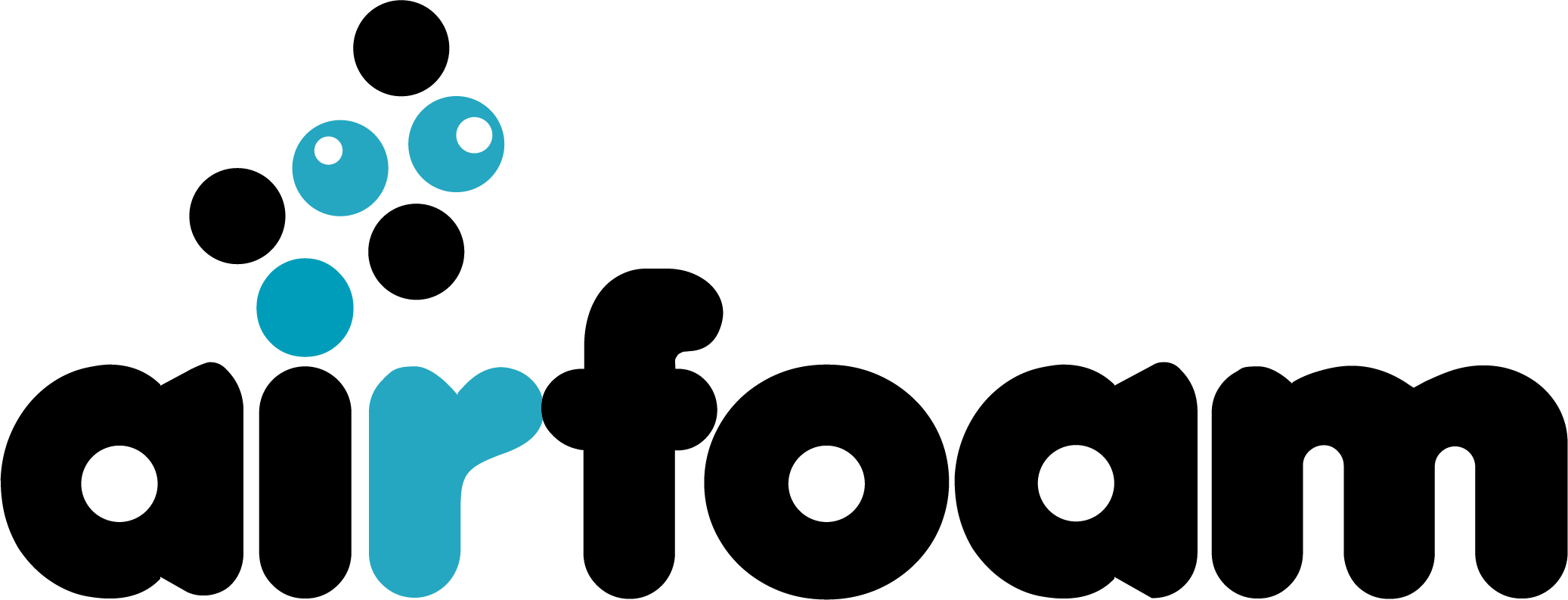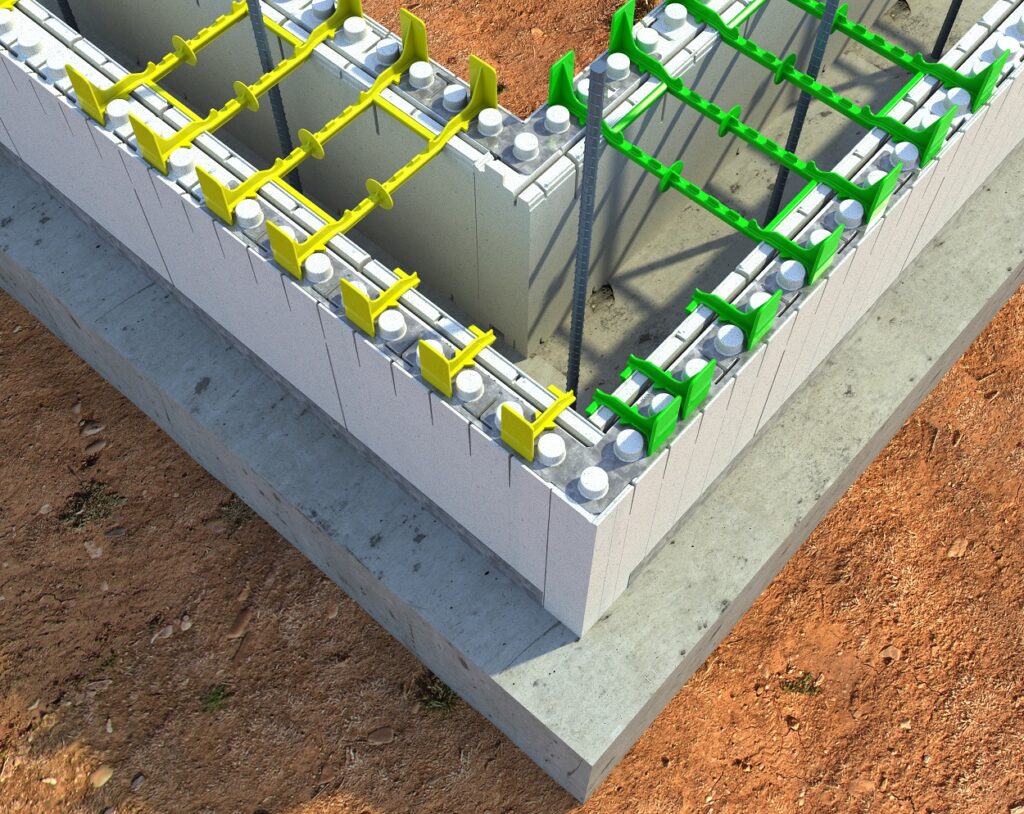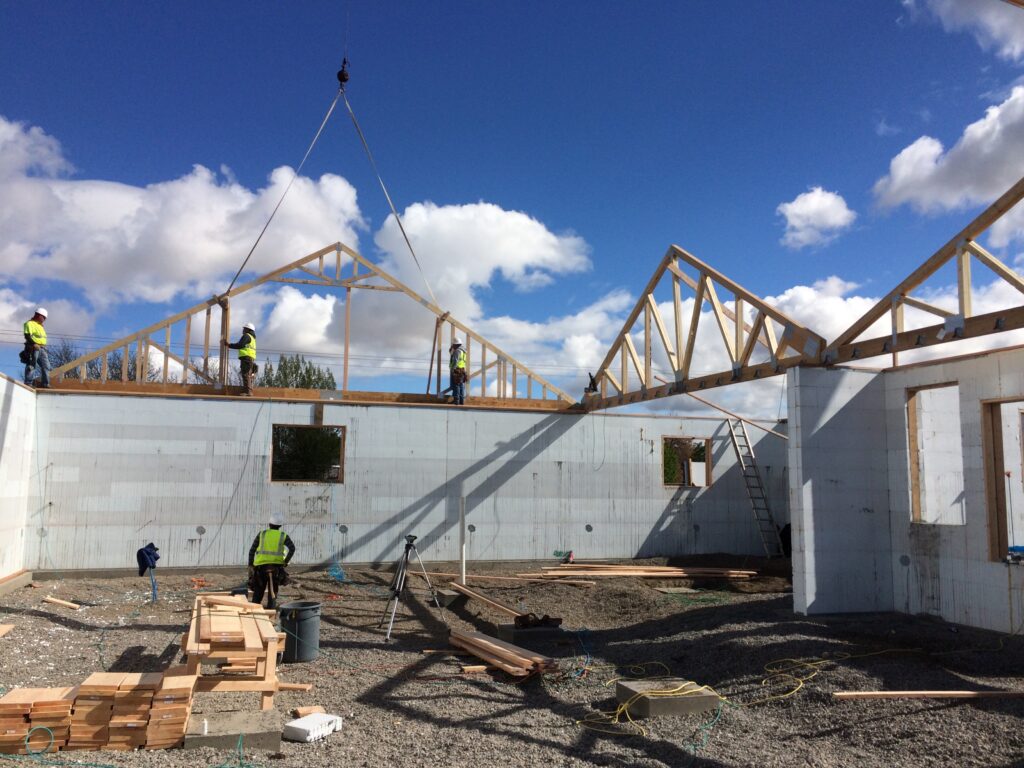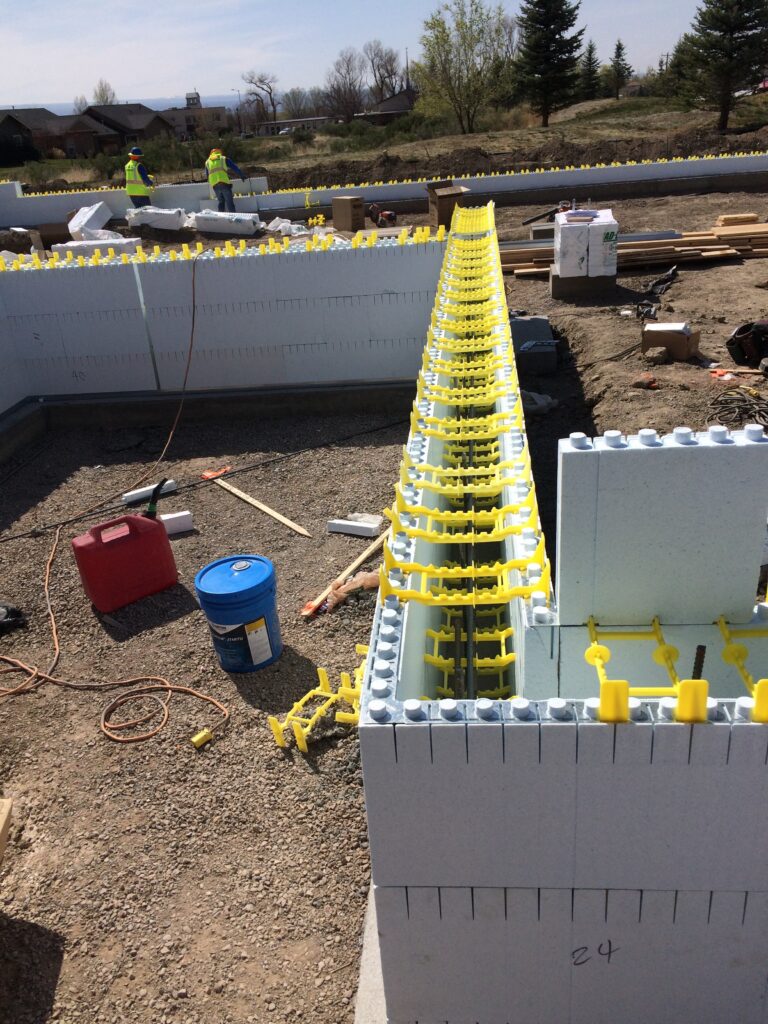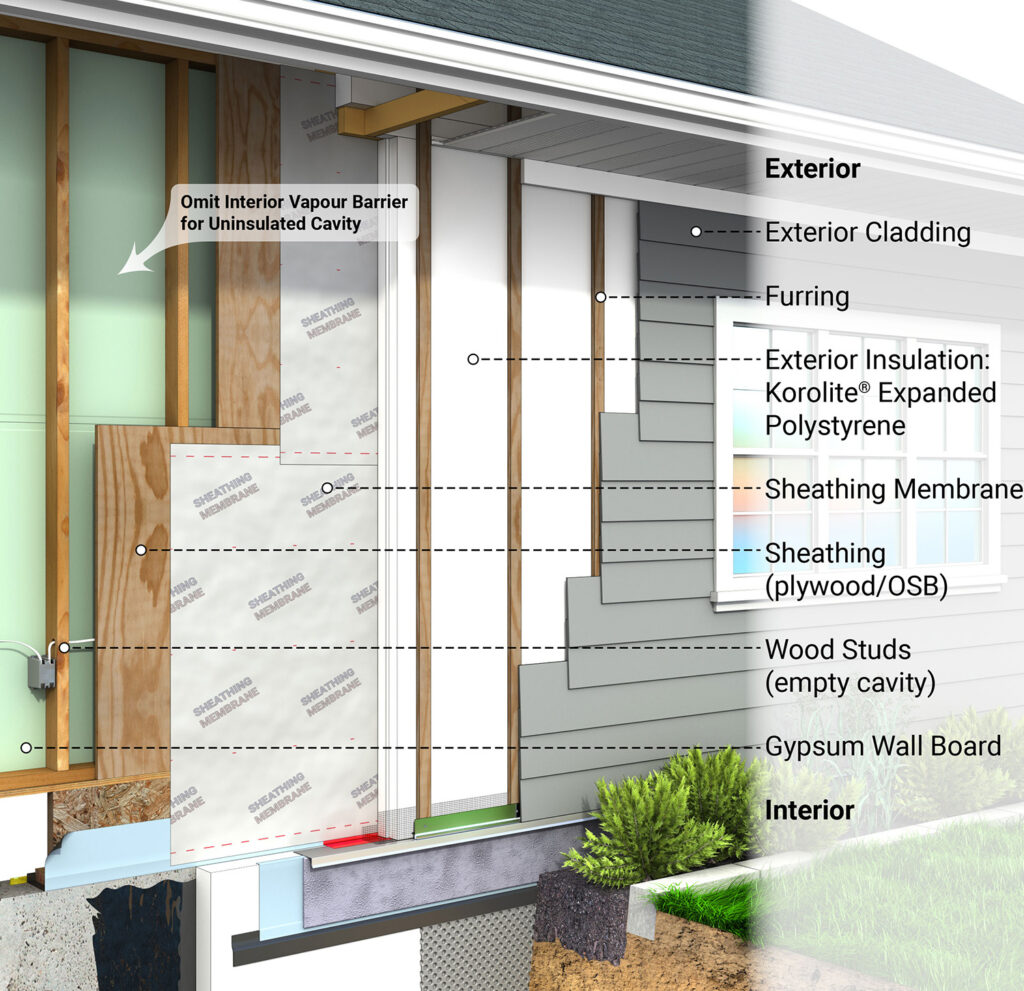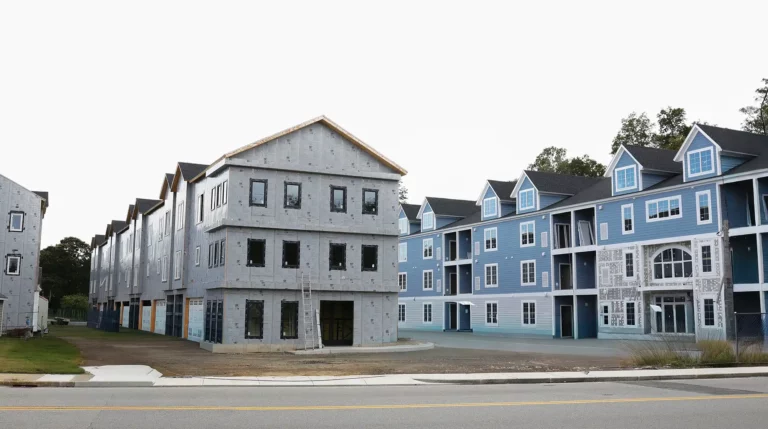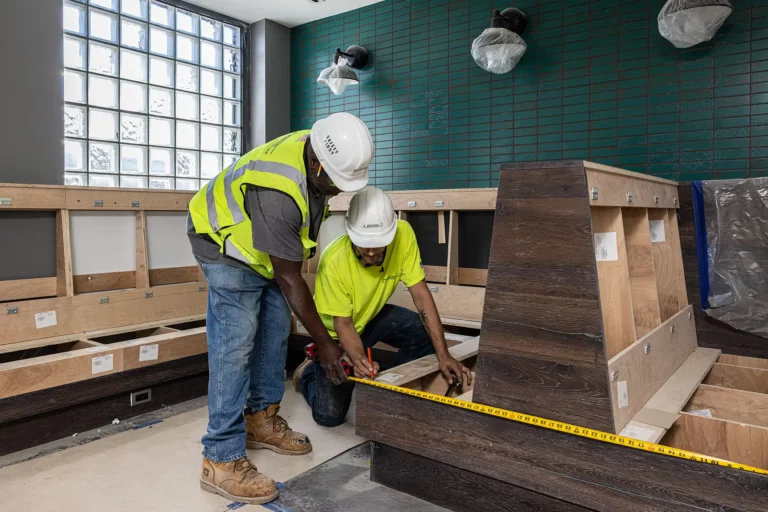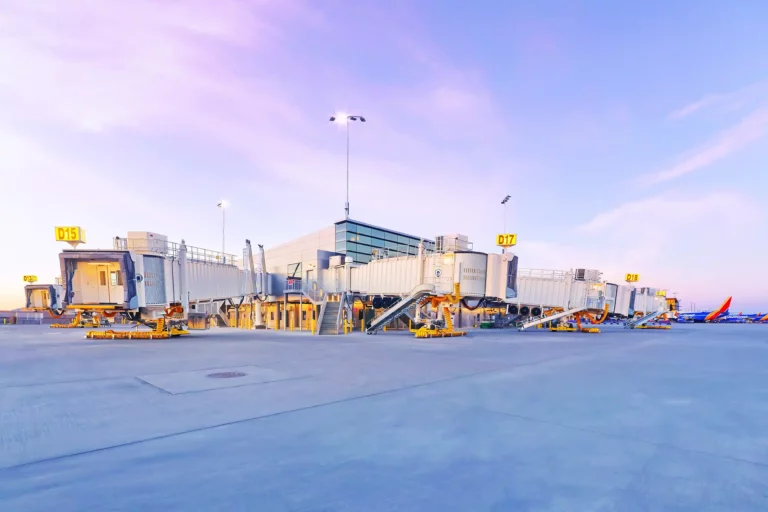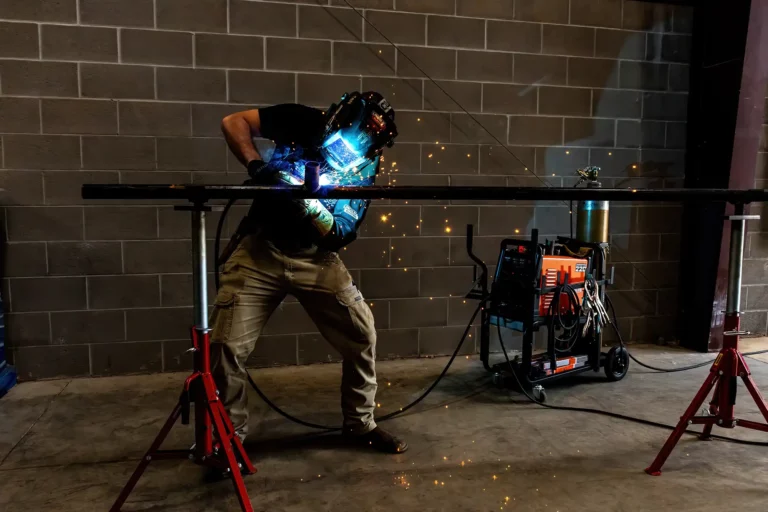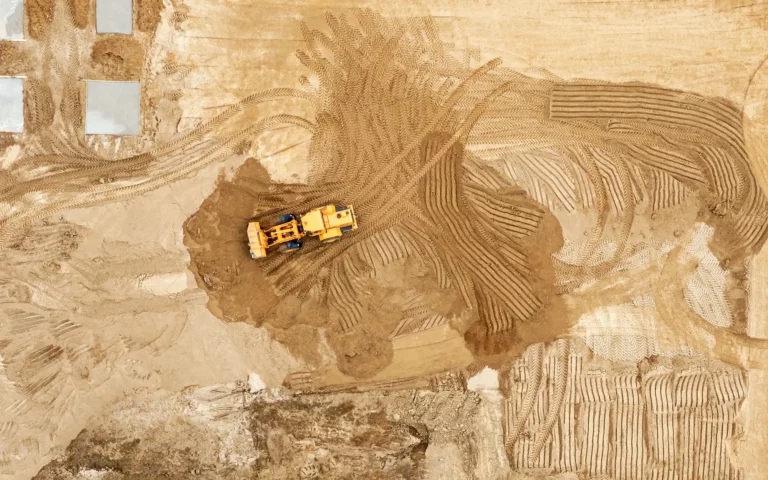It is often said that once we’ve got a roof over our heads and food on the table, everything else will fall into place. While Airfoam, in British Columbia, doesn’t directly manufacture these essential goods, quite often it is their innovative insulation solutions that place safe buildings and fresh food within our reach. Add life-saving medicines and vaccines to the list of products that they insulate, and Airfoam lands high up on the list of what we’ve come to know as essential.
Since their inception, over thirty-five years ago, Airfoam Industries Ltd. has grown and evolved into a multi-national provider of insulation solutions. They came to life in 1986 as Aqua-Pak Industries, taking on the task of shipping fresh coastal seafood around the world. From those humble beginnings as a packaging company they branched out into the building materials space, introducing Quad-Lock Insulating Concrete Forms in 1994. Later, after expanding the business and acquiring their biggest competitor, they rebranded all construction products under the Airfoam banner to become what they are today. “After our acquisitions and rebrand of our building materials under Airfoam we have a really strong lineup of products that can serve many construction applications,” says CEO Josh Plamondon, who joined the company in 2006. Today, the Airfoam group operates a fifty-fifty split business between insulated packaging and building materials, with the construction vertical growing rapidly in the current climate. “British Columbia is on the cutting edge of changing building codes in North America and that has really created a lot of opportunity for us.”
Evident in the building market today is an urgent drive towards sustainability and resilience. This comes as no surprise as the construction industry is responsible for 11% of global carbon emissions. To achieve Net Carbon Zero by 2050 as set out by world leaders at COP26, the way buildings are designed and built needs to be revolutionised. This includes how buildings are protected in both a thermal and moisture management sense, and that’s where Airfoam comes in. It doesn’t take long into our conversation for Josh to drive the point home that sustainability and resilience are at the core of what Airfoam does. “It seems the extremes are becoming more common,” says Josh, speaking of climate change and the forest fires that sweep through British Columbia every summer. “Providing high-performance insulation solutions is really all about minimising our impact on the environment. Especially our buildings – those are the biggest contributors to greenhouse gas emissions. Whether it’s the energy used to heat or cool them, or controlling moisture in the building envelope, better insulation is a simple solution that’ll have a big impact.”
It is EPS, or expanded polystyrene, that forms the basis of Airfoam’s high-performance insulation solutions. A versatile and lightweight material, EPS is about 98% air and is free from formaldehyde and CFC, HCFC and HFC gases. EPS allows for the safe insulation of food and medical supplies during transit as well as the quality and cost-efficient insulation of buildings. “A great product with a fantastic cost per R-Value,” is how Josh puts it. Airfoam is passionate about the low environmental impact of EPS compared to some other solutions on the market, and strives to put even more recycled content into their products in the future. “You look at what we do and you might think we just make foam, but what Airfoam is trying to accomplish and how we’re trying to impact the world has really resonated with me,” says Josh. “I’m lucky to be in a position now in which I get to help lead the charge with that.”
“A versatile and lightweight material, EPS is about 98% air and is free from formaldehyde and CFC, HCFC and HFC gases.”
Airfoam continues to be an influencer in Canadian and US markets by lending technical expertise to industry and government in the development of codes and standards. Airfoam experts sit on a number advisory committees that review changing needs in both the building and packaging industries and help to develop regulatory codes that protect the consumer in a safe and logical manner. An example of Airfoam’s influence can be found in BC Housing’s latest revision of the Building Envelope Guide for Houses – Part 9, which features a greatly expanded “how-to” section on Insulating Concrete Forms that helps to ensure compliance with BC’s residential building code.
Climate change is not the only significant global challenge that Airfoam has had to face head on. “Keep people healthy and keep the doors open,” was the Airfoam approach from the second the pandemic kicked off and their services were deemed essential. Airfoam was on the leading edge when it came to implementing protocols and going above and beyond what was required to keep everyone safe. Without any foresight on what the next few months would bring they’d made a pre-pandemic move to cloud-based solutions. This meant that from a technology standpoint they were able to flip a switch and send everybody home without fuss, while many others scrambled to implement online solutions overnight. “It was business as usual,” says Josh. Since March 2020, Airfoam has moved forward with a more flexible working environment, and have even been fortunate to grow in numbers without the limitations of a physical office.
While Airfoam has come out the other side of the pandemic with a happy and healthy team and a busy workload, it did not come without challenges. The extent of what COVID-19 has done to the global supply chain can only be fully understood if your business exists within that chain. Many of the materials that Airfoam uses come from overseas. When demand for such materials dropped and ships and containers were decommissioned, supplies came at a hefty price or fell out of reach entirely. “Later when the demand spiked there was no capacity to keep up, causing worldwide supply chain issues that we’ve all had to navigate.” Another well-documented supply chain issue that arose in light of COVID-19 is the great lumber shortage which, as Josh puts it, really pushed people to look at other proven methods of building. When you pair such issues with an industry-wide drive towards greener buildings, there is huge potential to be found. “We’ve seen a lot of organic growth over the last two years with people looking to build in a more sustainable way,” says Josh. “We worked really hard to make sure our customers had supply and were able to keep service levels close to 100% from our lead time standards. We even got some more business out of that from people who wouldn’t normally buy from us. We’re hopeful we can continue to grow those new relationships once things start to stabilize.”
Just like construction companies have had to find different ways to build, companies like Airfoam have had to find different ways to sell. It raises the question – where do traditional trade shows fit into all this? While traditional trade shows are not the sales powerhouses they once were, Vancouver-based trade show BUILDEX remains an important one for Airfoam. “It plants a flag in the soil that this is where we are, this is our birthplace, this is where we call home.” BUILDEX is an annual trade show that provides networking, educational and product demonstration opportunities to building industry professionals. Still an important platform for sales and lead generation, BUILDEX now has a strong focus on education and building science. “When we develop new building and insulation solutions BUILDEX is a great place for us to introduce them into the market.” This year Airfoam will be participating in the show alongside HAVAN, the Home Builders Association in the Lower Mainland. “This is really exciting as it signifies to us that we’re a key partner for them. It says a lot that they’ve invited us and really speaks to the work that we’ve been doing in the building community to promote high performance buildings and sustainability.”
Among the technical seminars and demonstrations that Airfoam will be running at BUILDEX 2022 is the introduction of their latest focused solution, Foamshield. Building on research from University of Alaska’s Cold Climate Housing Research Center, Foamshield technology can help builders achieve the highest levels of British Columbia’s emerging Energy Step Codes – which is a province-wide standard that incentivizes energy efficiency in new buildings – with off the shelf parts. Foamshield technology is based on what building scientists are calling “perfect wall” assemblies for healthy, durable, and budget-friendly buildings. Manufacturing the best performing products for the lowest cost is what drives Airfoam, and as Josh says, “it’s a compelling story for the building community to hear.” This kind of innovation and product development is a big part of Airfoam’s vision for the future. “We’re ramping up investment in a product development team which is going to be an exciting initiative over the next while. We strive to be the best in the world at what we do, which means innovating new ways to improve production, reduce costs and create efficiency.”
Airfoam has ambitious plans on where they want to be as a company and are focused on working together to achieve their vision. “Expanding product lines, expanding offerings, expanding reach – these things are all on the table for us.” With a world-class team of innovators and years of industry experience, Airfoam strives to be thought leaders in their field of expertise. “Internally we know we have a lot of talented people that understand building science, but outside our business we’re not sure it’s as well known. One of our initiatives is to drive these new products and solutions and to increase industry recognition,” says Josh. “We’ve set the bar much higher this year, but the whole team is really keen on continuing to push the rock up the hill.”










